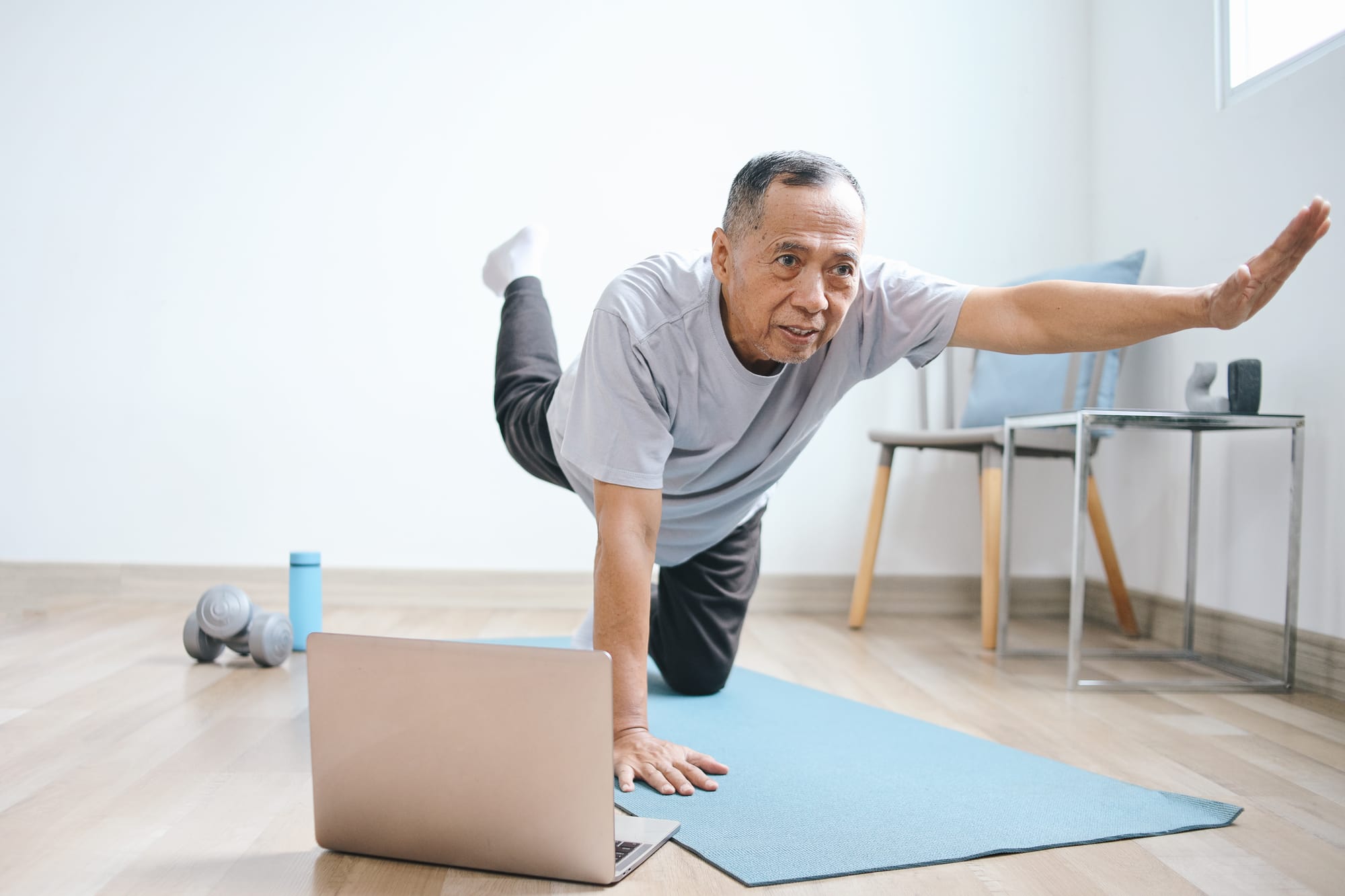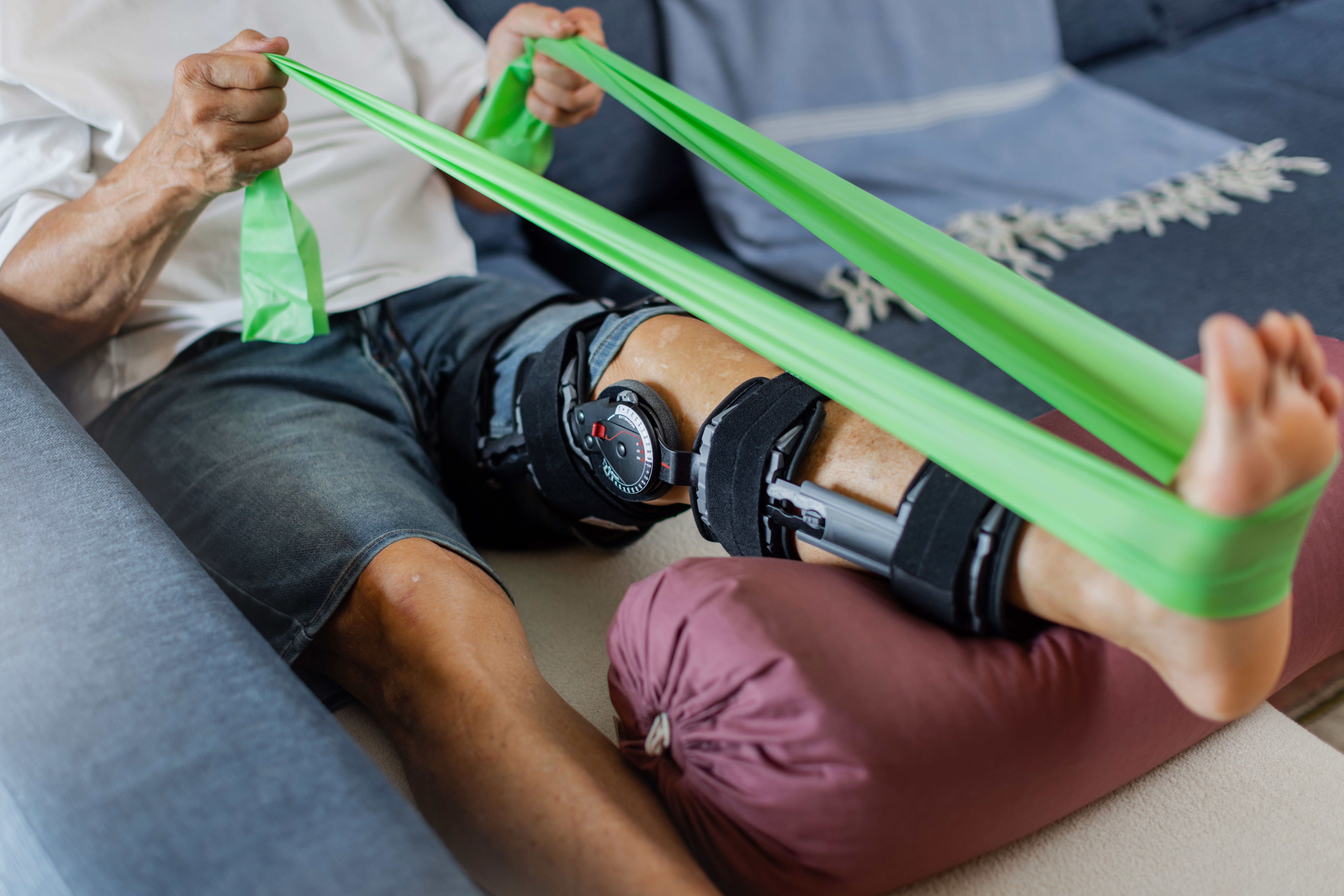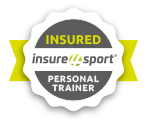Best Home Exercises for Elderly Adults with Limited Mobility

As we age, maintaining movement and independence becomes increasingly important — especially for older adults with limited mobility. Whether caused by arthritis, injury, illness, or general ageing, restricted movement can make daily activities more challenging and affect confidence, balance, and overall wellbeing. The good news? Exercise remains one of the most effective ways to improve strength, flexibility, and circulation, even for those with mobility issues. Regular, gentle exercise helps keep the body functioning efficiently, reduces stiffness, and supports independence — all from the comfort of home.
Why Exercise Is Essential for Older Adults with Limited Mobility
Limited mobility doesn’t mean giving up on movement — it simply means adapting it. For elderly adults, regular exercise offers a range of physical and emotional benefits:
- Improves Circulation and Heart Health
Gentle movement boosts blood flow, supporting oxygen delivery to muscles and organs. This helps reduce fatigue, promote healing, and improve overall cardiovascular health. - Strengthens Muscles and Joints
Weak muscles and stiff joints are common in later life. Targeted exercises strengthen the lower body, core, and upper body — helping with walking, standing, and performing daily activities safely. - Reduces Risk of Falls
Balance and coordination exercises enhance stability, reducing the likelihood of slips and falls — one of the leading causes of injury in older adults. - Supports Mental Wellbeing
Physical activity releases endorphins that lift mood and reduce anxiety. Exercise also boosts confidence, independence, and social engagement. - Improves Sleep and Energy Levels
Regular movement regulates sleep patterns and enhances energy throughout the day, helping older adults feel more alert and refreshed.
Safety First: Tips Before Starting
Before beginning any exercise routine, elderly adults should:
- Consult a GP or physiotherapist, especially if they have a chronic condition, joint pain, or are recovering from surgery.
- Start slowly — even five minutes of movement can make a difference.
- Use a sturdy chair, wall, or countertop for support and safety.
- Wear comfortable shoes and clothing that allow easy movement.
- Listen to the body — stop immediately if pain, dizziness, or shortness of breath occurs.
Best Home Exercises for Limited Mobility
These exercises are designed to be gentle, safe, and adaptable for different ability levels. Many can be done seated or standing with minimal equipment — just a chair and some space.
1. Seated Marching
Benefits: Improves circulation, strengthens hip flexors, and increases heart rate.
How to do it:
- Sit upright in a sturdy chair with feet flat on the floor.
- Lift one knee as high as possible, then lower it.
- Repeat with the other leg.
- Continue marching in place for 30–60 seconds.
Tip: Pump your arms to increase intensity and coordination.
2. Ankle Circles
Benefits: Improves flexibility and reduces stiffness in the ankles, which helps with walking stability.
How to do it:
- Sit or lie back comfortably.
- Slowly rotate one ankle clockwise 10 times, then anti-clockwise 10 times.
- Repeat on the other foot.
Tip: Perform before getting out of bed to ease morning stiffness.
3. Seated Arm Raises
Benefits: Strengthens shoulders and arms, supports upper body function.
How to do it:
- Sit up straight with arms by your sides.
- Raise both arms above your head slowly, then lower back down.
- Repeat 10–15 times.
Variation: Hold light weights or water bottles for added resistance.
4. Chair Squats (for those able to stand)
Benefits: Builds leg and glute strength, essential for standing, walking, and using stairs.
How to do it:
- Stand in front of a sturdy chair with feet shoulder-width apart.
- Lower yourself slowly as if to sit, then push through your heels to stand again.
- Repeat 8–12 times.
Tip: Keep hands on the chair for support if needed.
5. Seated Side Bends
Benefits: Strengthens core muscles and improves posture.
How to do it:
- Sit tall with feet flat on the floor.
- Place one hand behind your head and the other on your hip.
- Slowly bend to one side, then return to centre.
- Repeat on the opposite side.
- Perform 10–12 bends each side.
6. Heel and Toe Taps
Benefits: Strengthens lower legs, improves blood flow, and reduces swelling.
How to do it:
- Sit comfortably with feet flat on the floor.
- Lift toes while keeping heels on the ground, then switch — lift heels and keep toes down.
- Continue tapping for 30–60 seconds.
7. Seated Leg Extensions
Benefits: Strengthens thighs and supports knee joint health.
How to do it:
- Sit upright in a chair.
- Straighten one leg out in front of you, hold for a few seconds, then lower.
- Repeat 10–15 times per leg.
Tip: Add ankle weights for more challenge.
8. Shoulder Rolls
Benefits: Reduces tension, improves posture, and enhances flexibility.
How to do it:
- Sit or stand tall.
- Slowly roll shoulders forward 10 times, then backward 10 times.
9. Wall Push-Ups
Benefits: Builds upper body strength safely without the need to get on the floor.
How to do it:
- Stand facing a wall, place hands shoulder-width apart at chest height.
- Bend elbows and lean in towards the wall, then push back.
- Perform 10–15 repetitions.
10. Gentle Seated Stretch Routine
Benefits: Increases flexibility and relaxation.
How to do it:
- Reach arms overhead, stretch gently, and hold for 10 seconds.
- Twist your torso slowly to each side.
- Tilt your head from side to side to release neck tension.
Tip: Finish every session with deep breathing to calm the body and mind.
Creating a Daily Exercise Routine
For best results, older adults should aim to move every day, even if only for short periods. A simple home routine might look like this:
- Warm-up (5 minutes): Ankle circles, shoulder rolls, gentle marching.
- Main session (15–20 minutes): Mix of seated and standing exercises (e.g., squats, arm raises, leg extensions).
- Cool down (5 minutes): Gentle stretches and deep breathing.
Consistency is key. Even small daily movements lead to significant improvements in strength, balance, and overall wellbeing over time.
Supporting Independence and Confidence
Exercise isn’t just about physical health — it’s about maintaining independence, confidence, and a sense of purpose. When older adults feel capable in their bodies, they’re more likely to engage in social activities, perform household tasks, and enjoy life to the fullest.Regular home-based movement encourages:
- Better balance and mobility
- Improved confidence when walking or standing
- Enhanced mood and mental clarity
- Greater independence in daily living
Finally...
For elderly adults with limited mobility, home exercise offers a safe and effective way to stay strong, flexible, and independent. Gentle, regular movement can improve not only physical function but also confidence and emotional wellbeing.It’s never too late to start — even the smallest steps can lead to big improvements. With patience, consistency, and a focus on safety, older adults can enjoy a more active, fulfilling life right from the comfort of home.



